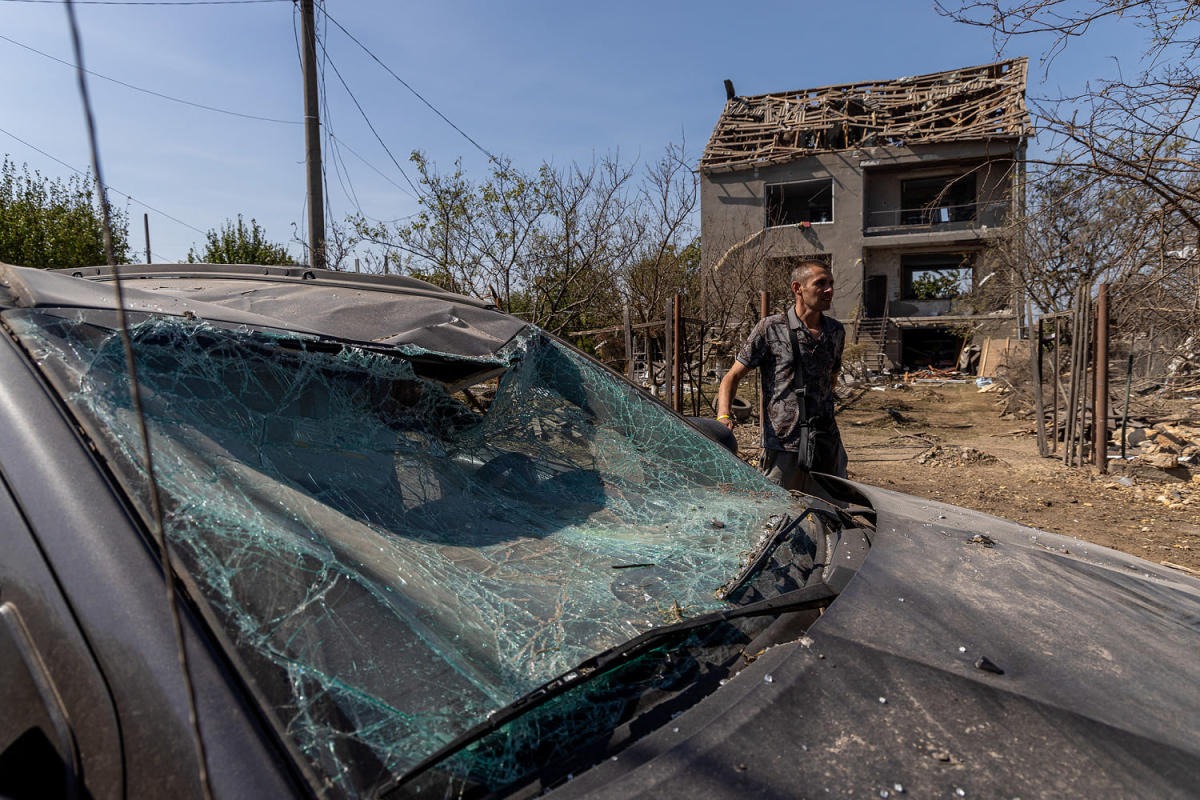KHARKIV, Ukraine — The text message was brief and straight to the point.
“Strategic bombers in the air … go to the shelter when missiles come,” an adviser to Ukrainian President Volodymyr Zelenskyy told NBC News read the text that went out at around 7 a.m. local time (midnight ET).
Within minutes, the air raid sirens started blaring and people out in the streets rushed into shelters amid loud explosions, as Russian rockets and drones started to rain down.
At first the explosions were far apart and distant, but over five successive bursts they got closer and closer to Kharkiv, Ukraine’s second largest city in the country’s northeast. The final one was quite loud.
Similar scenes took place in the capital, Kyiv, the southern city of Odesa and other cities across the country, Zelenskyy said in a statement on Telegram. It was Moscow’s most intense strike in weeks.
“More than 100 rockets of various types” were used along with about 100 Iranian-made Shahed drones, the statement read. “And like most previous Russian strikes, this one is just as vile, targeting critical civilian infrastructure,” it added.
Meanwhile, Ukraine’s air force said Russia used 11 TU-95 strategic bombers, which can carry six cruise missiles depending on the type.
A 69-year-old man in the Dnipropetrovsk region and a man in the Zaporizhzhia region were among the at least five people confirmed dead, local officials said. Other three fatalities were reported in the regions of Kharkiv, Zhytomyr and Volyn.
Inside a Kharkiv shelter, it gradually became clear from online chatter that it was a massive attack, with drones and missiles making their way from multiple directions — following routes programmed by Russian mission commanders in far-off bunkers, winding and weaving to try to fool Ukrainian air defenses.
Videos on social media showed real-time sightings of the missiles flying, falling and exploding. Others showed people flocking into the metro stations to wait it out.
Prime Minister Denys Shmyhal said in a later statement that 15 Ukrainian regions sustained damage from the barrage.
Russia’s defense ministry, meanwhile, said its forces used high-precision weapons to strike important energy infrastructure that it said supported the military industrial complex. It listed power substations, gas compressor stations and storage sites for aircraft weapons.
Separately, Poland said an “object” had entered its airspace and may have landed on Polish territory, and that searches were underway.
After more than two years of war, Ukrainians seem to have grown resilient to this type of attack, which came two days after citizens in Kharkiv and other cities took to the streets to celebrate Independence Day and mark the 33 years since the country gained its autonomy from the Soviet Union.
Many flooded social media with messages of gratitude, support and thanks for the Ukrainian soldiers on the front lines. Some praised their surprise incursion into Russia’s Kursk region. Since the incursion started on Aug. 6, Ukraine has seized a considerable amount of territory, including scores of small towns, and has captured hundreds of Russian soldiers.
As soon as the air raid alert was lifted after an hour or so, Kharkiv quickly returned to normal Monday.
The cafes were packed again, some serving food with a “gen” label on, meaning it can be prepared on a generator.
Life carried on.
This article was originally published on NBCNews.com








